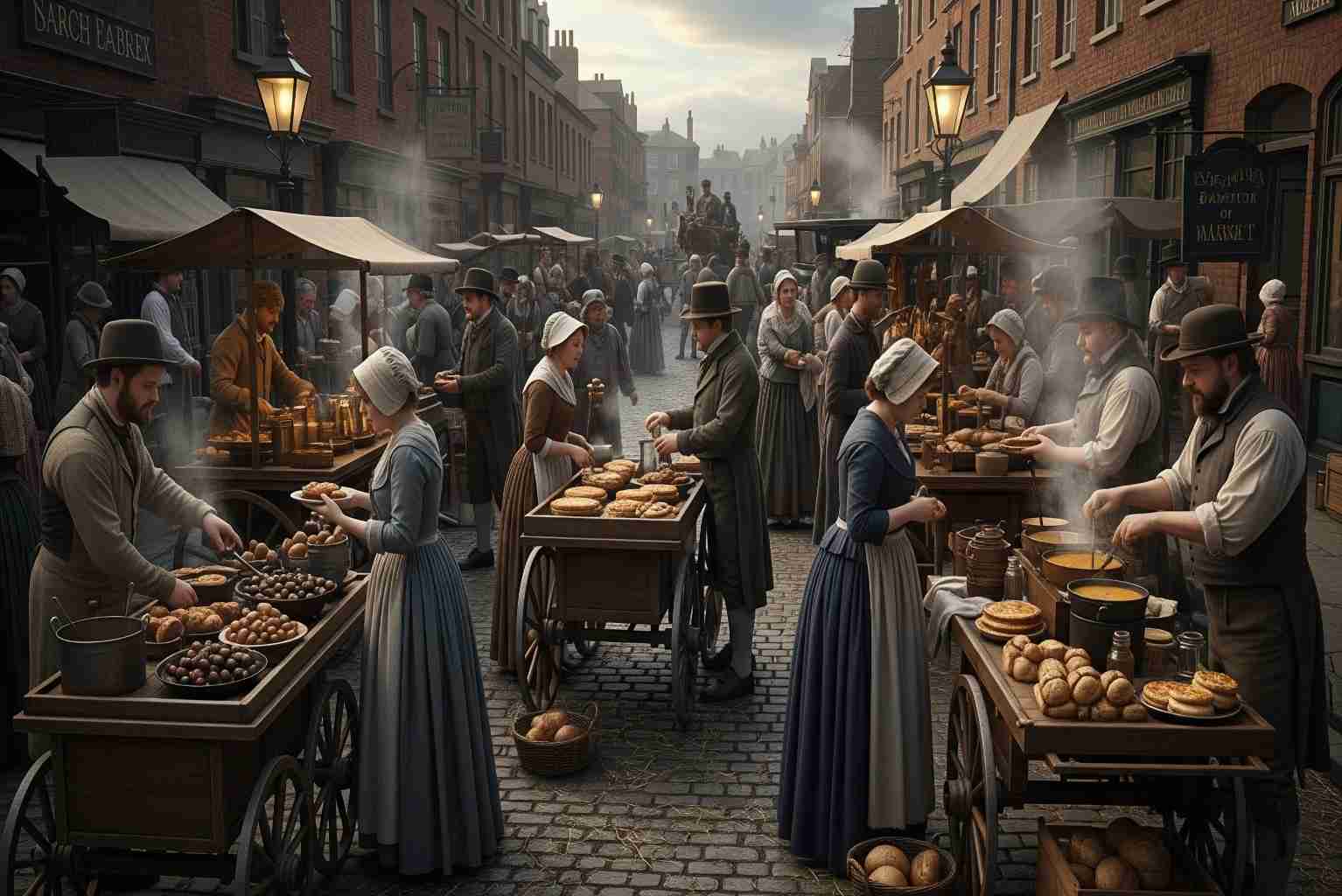The bustling streets of the 19th century were a sensory feast, with the aroma of hot food wafting from vendors’ carts and stalls. The rise of urbanization during the Industrial Revolution meant that a new class of factory workers and city dwellers needed quick, affordable meals. Street food emerged as a culinary lifeline, offering everything from hearty, savory pies to sweet treats, reflecting the diverse cultures and resourcefulness of the era. These dishes were more than just sustenance; they were a vibrant part of daily life and a window into the past.
1. Jellied Eels
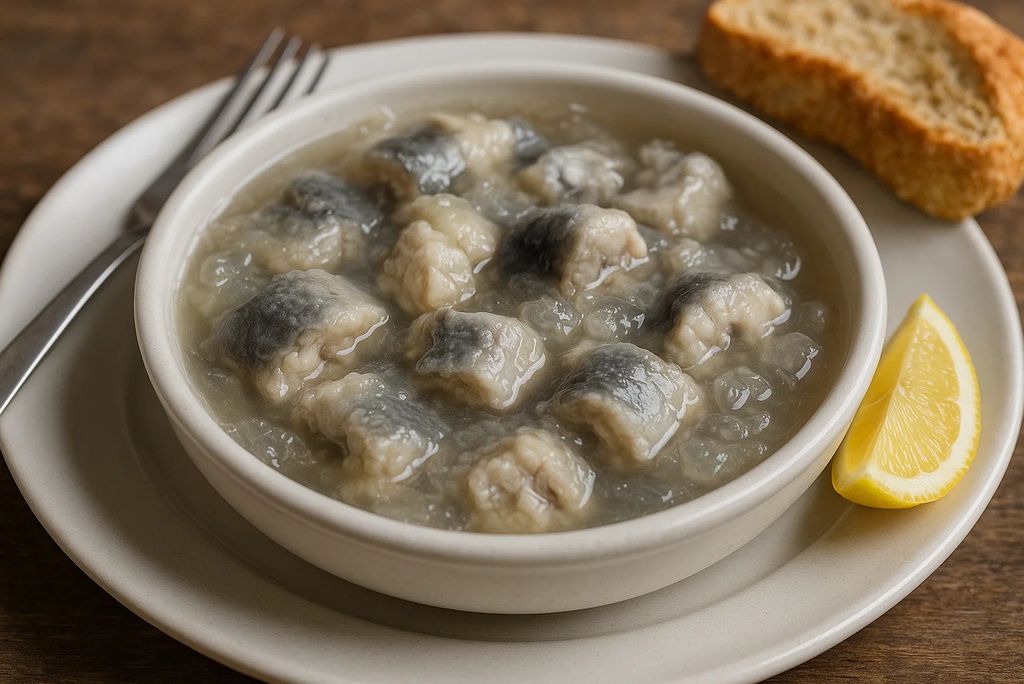
A true classic of Victorian London, jellied eels were a cheap and filling food for the working class. Eels, sourced from the Thames, were stewed in a broth with herbs and spices. As the mixture cooled, the natural gelatin in the eels caused the broth to set into a jelly. This dish was typically sold by costermongers from street carts, served cold, and often with a splash of vinegar. It remains a historic and acquired taste.
2. Hot Baked Potatoes
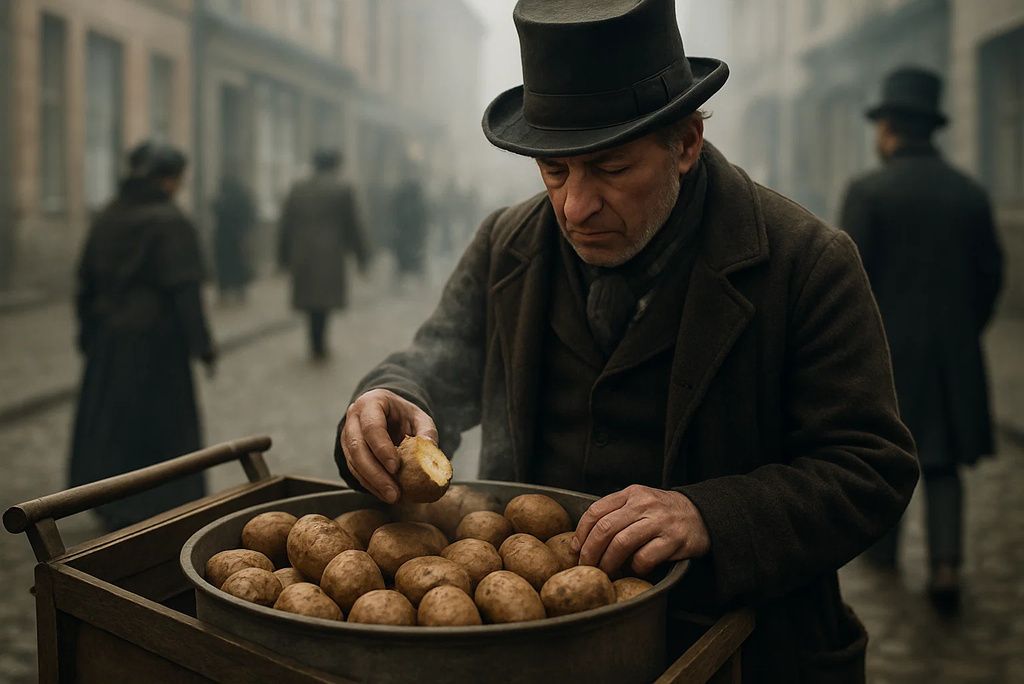
Baked potatoes were a quintessential winter street food in 19th-century Britain. Vendors kept the potatoes steaming hot in brightly painted cans, warmed by a charcoal fire and a tray of hot water. For a penny, you could get a large, fluffy potato topped with butter, salt, and pepper, which was a satisfying and warming meal. It also served as a convenient hand-warmer for people braving the cold streets. (Source)
3. Meat Pies

Portable and inexpensive, meat pies were a staple for hungry laborers in London. These pies were often filled with mutton or a variety of meat scraps, providing a hearty, on-the-go meal. Vendors would sell them from baskets or carts, and while popular, the quality of the meat was often a subject of satire, with jokes about the fillings being unknown. Regardless, they were a cornerstone of the street food scene. (Source)
4. Oysters
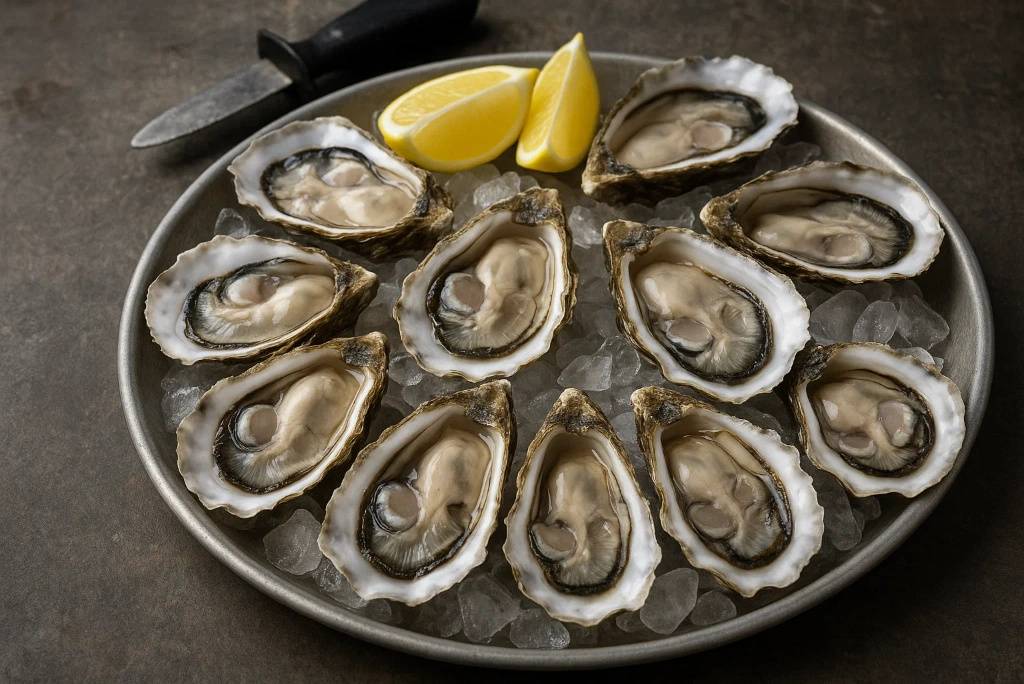
In 19th-century America and Britain, oysters were a remarkably cheap and plentiful street food, enjoyed by all social classes. They were so common that they were often considered food for the poor. Vendors would sell them raw from carts or roasted and fried for a slightly higher price. Overfishing and pollution in the early 20th century eventually drove prices up, transforming the oyster into the delicacy it is today.
5. Fried Fish
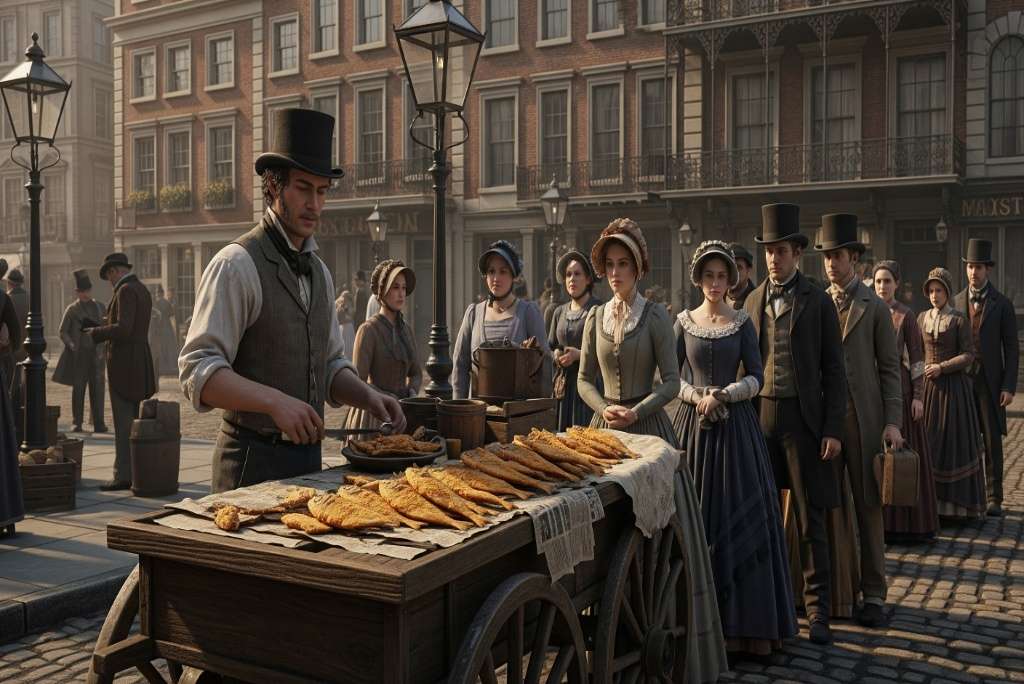
Fried fish was a popular street food in Victorian London, often sold as a standalone item without the modern-day accompaniment of chips. The development of the railway system made it easier to transport fresh fish from the coast to the city, making it a more common and accessible meal. Vendors sold pieces of plaice or sole, battered and fried, which were a favorite among race-goers and factory workers alike.
6. Hot Dogs

The hot dog, as a quintessential American street food, emerged in the late 19th century, brought by German immigrants. Initially, these sausages were served without a bun. The idea of putting the sausage in a roll came from vendors who wanted to make it easier for people to eat. This portable and affordable food quickly gained popularity in cities like New York and at amusement parks like Coney Island. (Source)
7. Satay
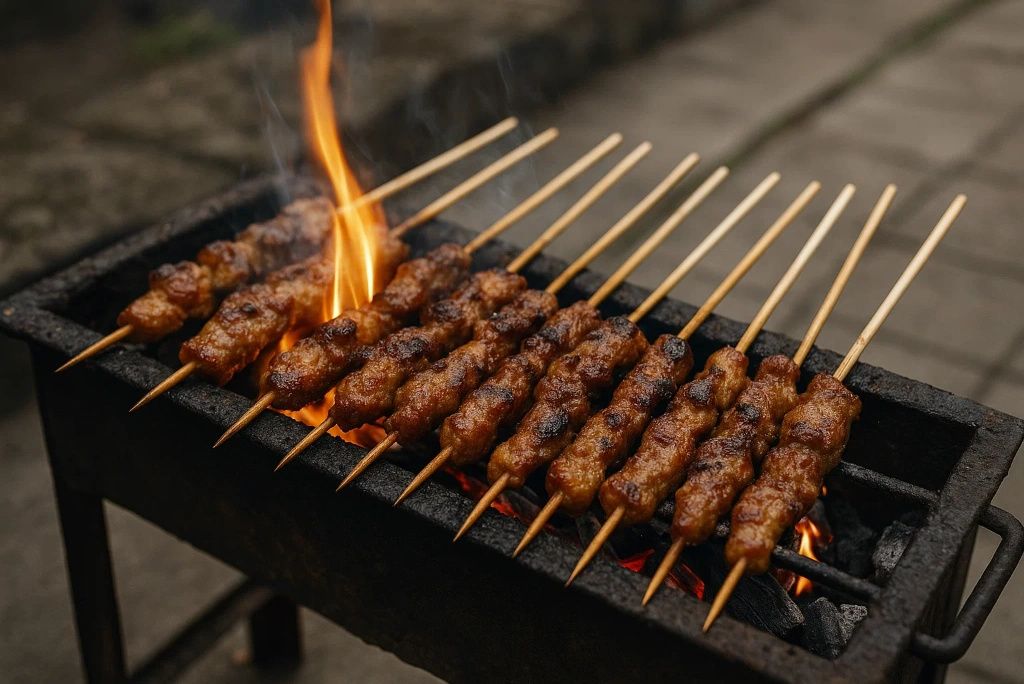
Originating in Indonesia during the 19th century, satay is a popular street food consisting of seasoned, skewered, and grilled meat, served with a peanut sauce. It became a staple in the Dutch East Indies, sold by mobile vendors who carried their entire kitchen on a bamboo pole. Satay’s popularity spread throughout Southeast Asia, and today it is a well-loved dish found in Singapore, Malaysia, and beyond, with many regional variations. (Source)
8. Tamales
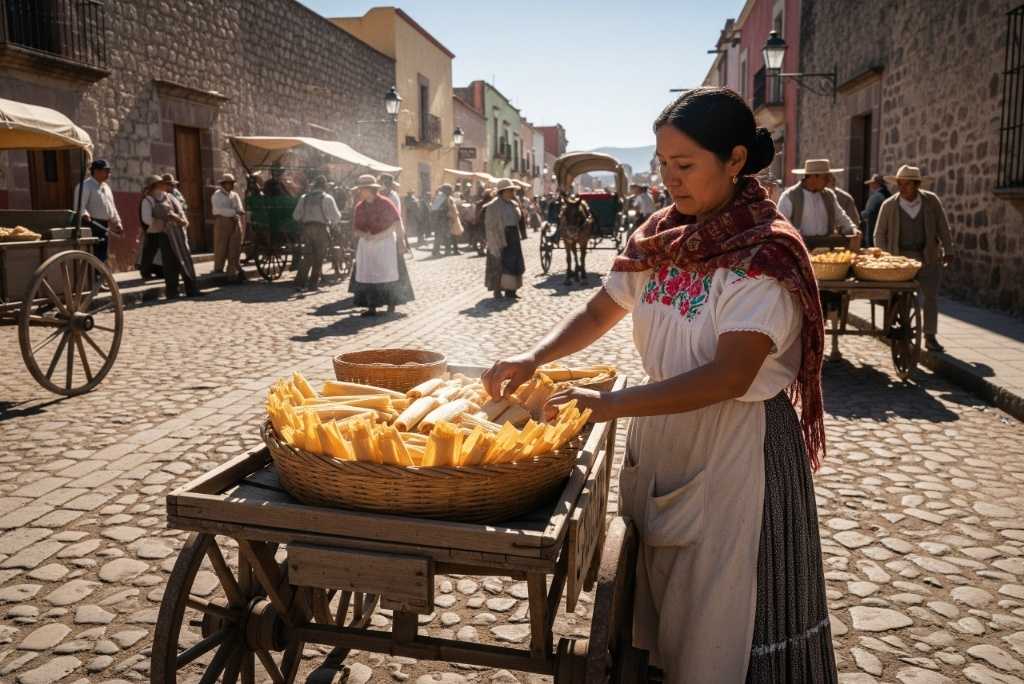
In Mexico, tamales were a traditional food sold on the streets. Made from a corn-based dough (masa) filled with various ingredients, wrapped in a corn husk or banana leaf, and then steamed, tamales were a nutritious and satisfying meal. Vendors would carry baskets of hot tamales through the streets, selling them to passersby. This pre-Hispanic dish continues to be a vibrant part of Mexican street food culture.
9. Roasted Corn
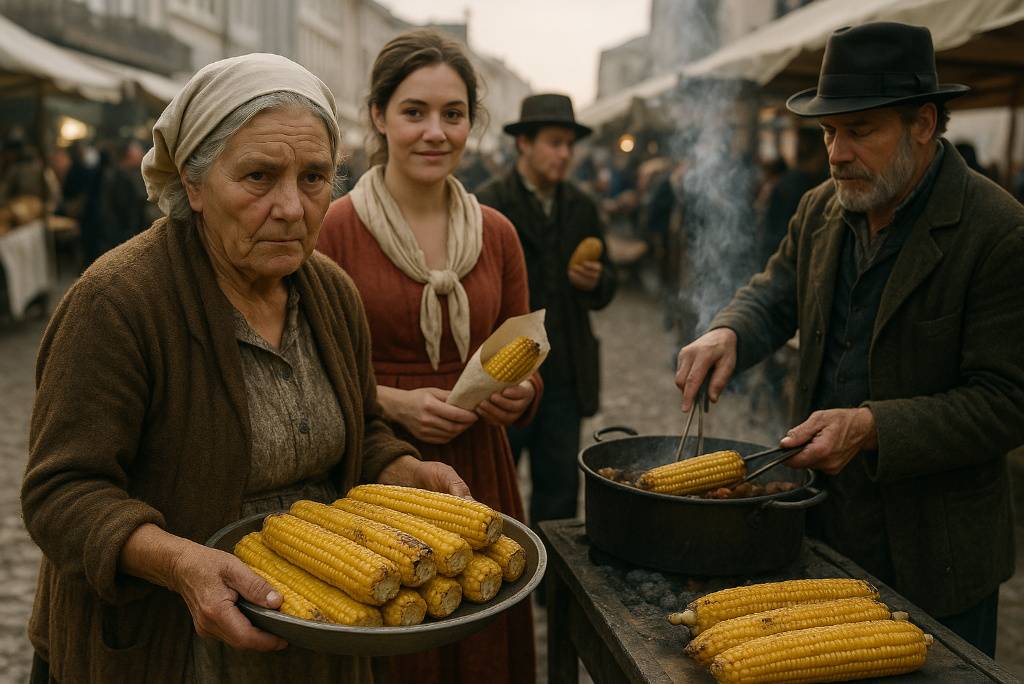
A popular American colonial and 19th-century street food, roasted corn ears were sold by vendors, often with a pat of butter. It was a simple, seasonal food that was both cheap and delicious. The smell of roasting corn would draw crowds, particularly in urban areas. This tradition of selling hot, roasted corn on the cob continues in many parts of the world today.
10. Pretzels
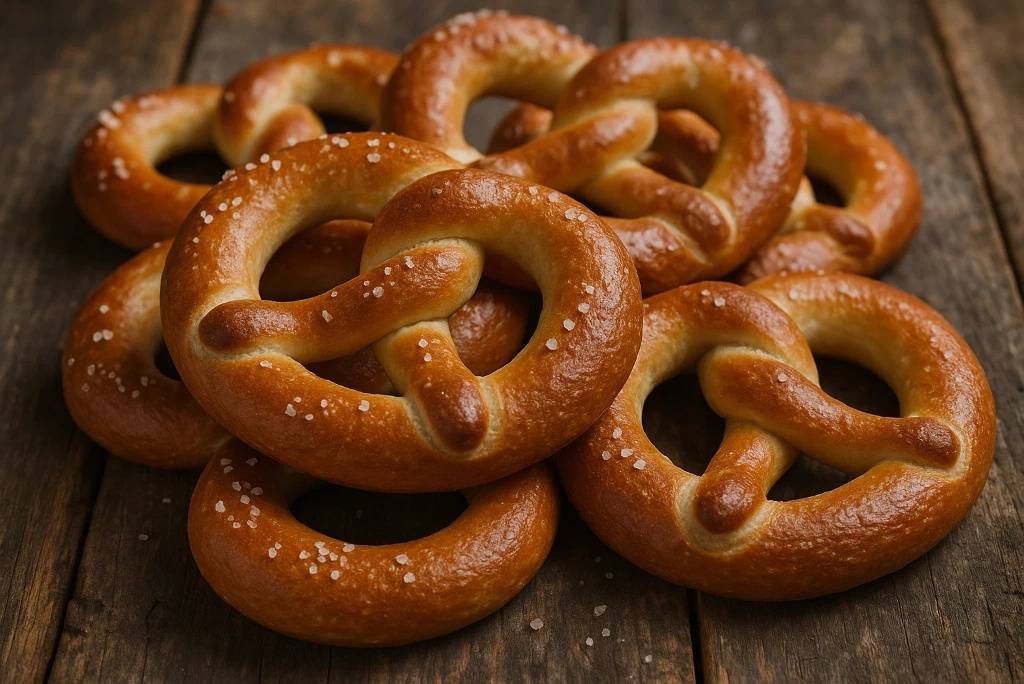
German immigrants brought pretzels to the United States in the 19th century. These soft, twisted breads were sold by street vendors, and their low cost and satisfying chewiness made them an instant hit. They became a symbol of New York’s burgeoning street food scene, particularly in areas with large immigrant populations, providing an easy-to-eat snack for people on the move. (Source)
11. French Fries
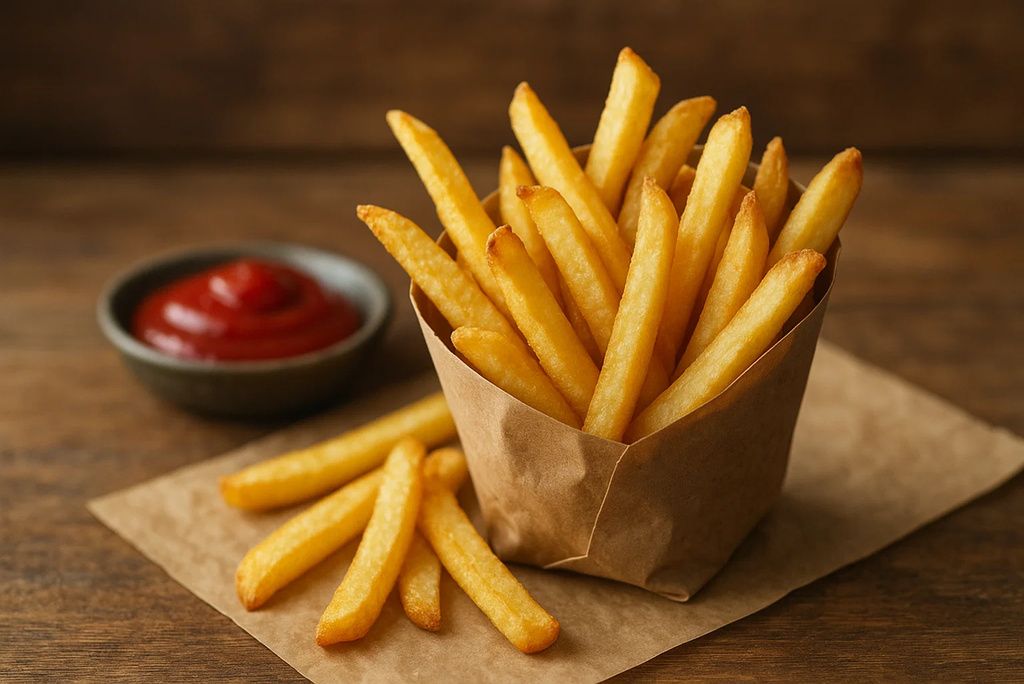
While the exact origin is debated, fried potato strips, or French fries, likely originated as a street food in Paris during the 1840s. They were a cheap and quick snack, sold hot and crispy to people walking along the streets. The idea of frying potatoes in this manner spread, and the dish became a global phenomenon, though its early form was a simple, unfussy street food. (Source)
12. Roasted Peanuts
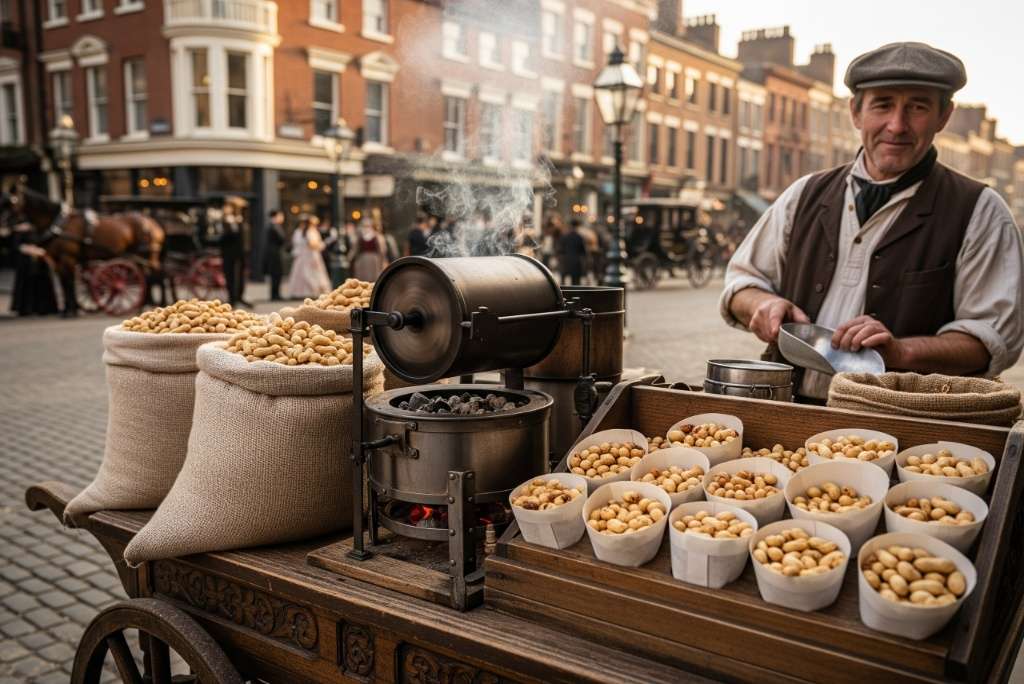
Sold from carts and roasted in small batches, peanuts were a common and inexpensive street snack in the late 19th and early 20th centuries. The popularity of peanuts grew significantly with the invention of the peanut roasting machine. The distinctive aroma of roasting peanuts became a familiar part of the urban landscape in many American cities, and it remains a popular treat today
13. Tacos
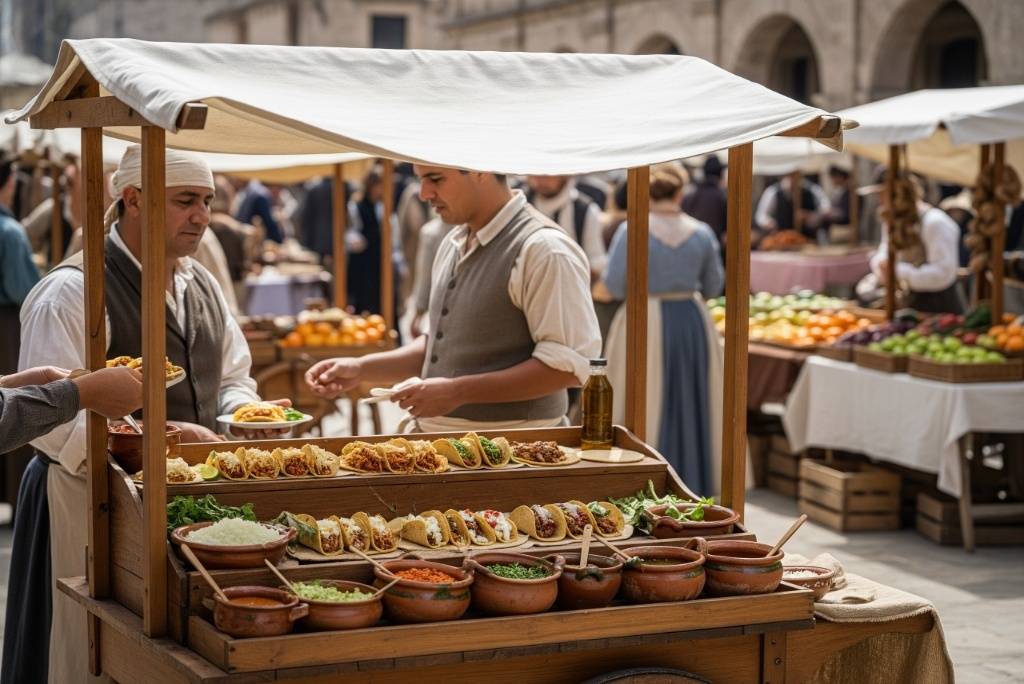
The word “taco” is believed to have originated in the 18th century in the Mexican silver mines, where it referred to gunpowder wrapped in paper. By the 19th century, the term was applied to the now-familiar corn tortilla folded around various fillings. Mexican immigrants brought the dish to the United States, and it became a key part of the street food landscape, offering a flavorful and affordable meal. (Source)
14. Plum Duff
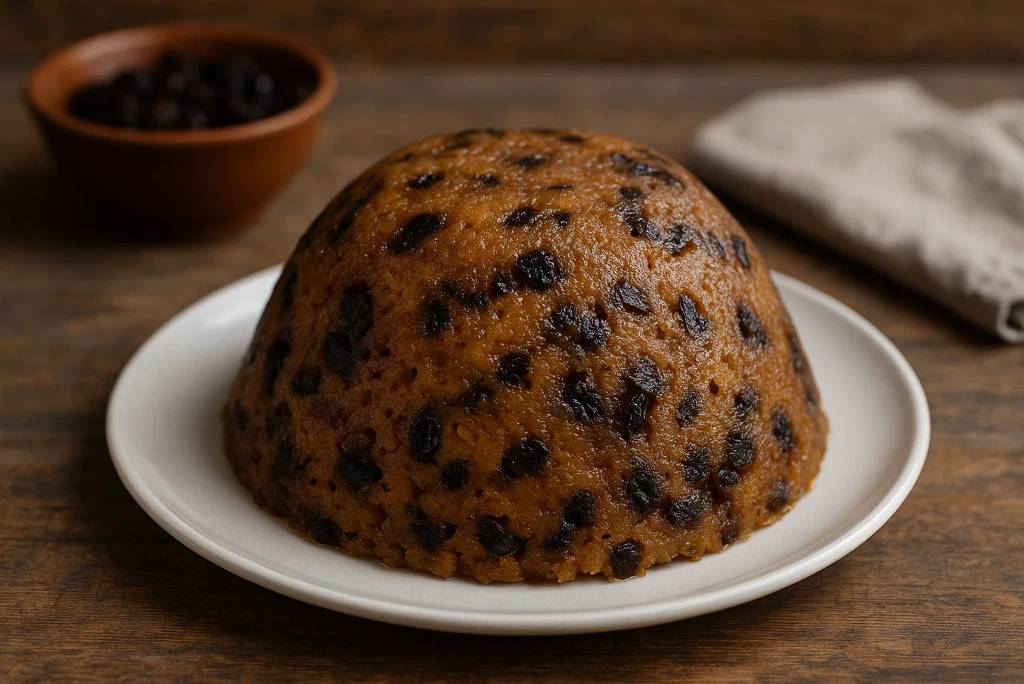
In Victorian Britain, “Plum Duff” was a simple, boiled pudding sold by street vendors. It was essentially a carbohydrate-rich dessert, often made with raisins or other dried fruit, and served hot. This sweet treat provided a quick burst of energy for weary workers and was a popular item, despite the sometimes questionable quality of its ingredients. It was a humble precursor to many modern desserts.
15. Pickled Whelks and Periwinkles
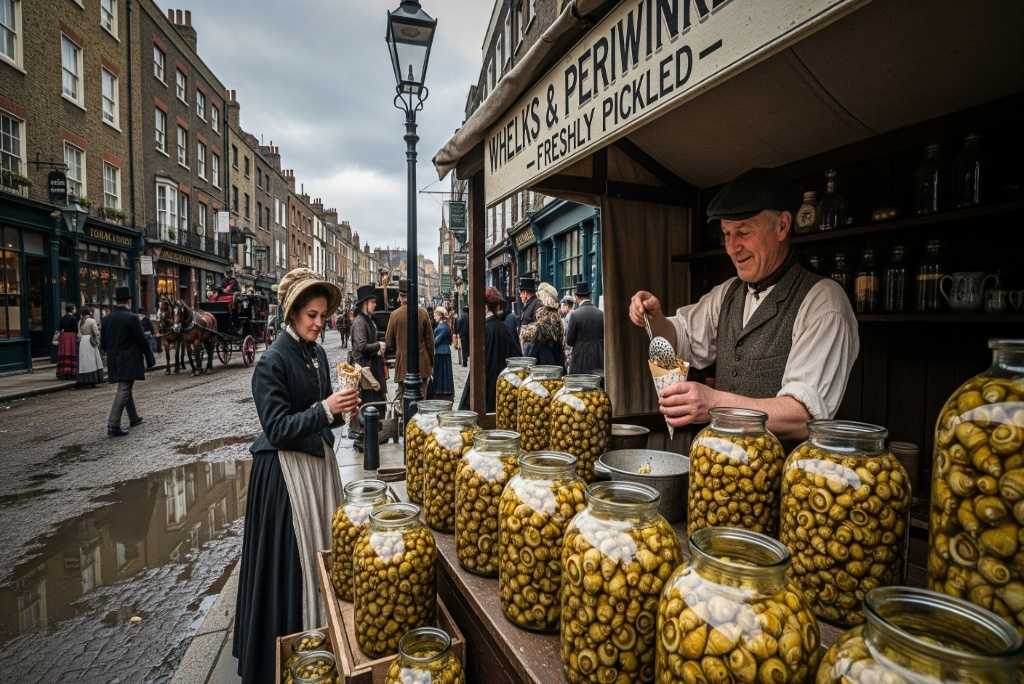
These sea snails were a common sight in London’s street food scene. Vendors would sell them from baskets, often pre-cooked and seasoned with pepper and vinegar. The small size of periwinkles meant you had to use a pin to extract the meat, making it a slow-eating snack that was popular in pubs. Whelks were larger and sold by the dozen, a cheap alternative to oysters for the poor.

